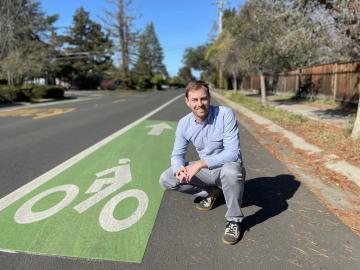
Filter News
Area of Research
- (-) Energy Science (76)
- (-) National Security (18)
- Advanced Manufacturing (4)
- Biological Systems (2)
- Biology and Environment (90)
- Biology and Soft Matter (1)
- Computational Biology (1)
- Computational Engineering (2)
- Computer Science (1)
- Fusion and Fission (4)
- Fusion Energy (1)
- Isotope Development and Production (1)
- Isotopes (5)
- Materials (39)
- Materials for Computing (4)
- Mathematics (1)
- Neutron Science (16)
- Nuclear Science and Technology (10)
- Quantum information Science (1)
- Sensors and Controls (1)
- Supercomputing (72)
News Topics
- (-) Bioenergy (28)
- (-) Composites (17)
- (-) Critical Materials (9)
- (-) Molten Salt (1)
- (-) Security (15)
- (-) Space Exploration (3)
- (-) Summit (6)
- 3-D Printing/Advanced Manufacturing (81)
- Advanced Reactors (7)
- Artificial Intelligence (19)
- Big Data (11)
- Biology (14)
- Biomedical (7)
- Biotechnology (5)
- Buildings (38)
- Chemical Sciences (14)
- Clean Water (8)
- Computer Science (41)
- Coronavirus (14)
- Cybersecurity (25)
- Energy Storage (71)
- Environment (59)
- Exascale Computing (2)
- Fossil Energy (2)
- Frontier (2)
- Fusion (2)
- Grid (43)
- High-Performance Computing (10)
- Hydropower (3)
- Isotopes (1)
- Machine Learning (18)
- Materials (36)
- Materials Science (29)
- Mathematics (2)
- Mercury (3)
- Microelectronics (1)
- Microscopy (8)
- Nanotechnology (9)
- National Security (37)
- Neutron Science (15)
- Nuclear Energy (11)
- Partnerships (16)
- Physics (2)
- Polymers (11)
- Quantum Science (3)
- Simulation (4)
- Statistics (1)
- Transportation (68)
Media Contacts

When the COVID-19 pandemic stunned the world in 2020, researchers at ORNL wondered how they could extend their support and help

Scientists develop environmental justice lens to identify neighborhoods vulnerable to climate change
A new capability to identify urban neighborhoods, down to the block and building level, that are most vulnerable to climate change could help ensure that mitigation and resilience programs reach the people who need them the most.

ORNL scientists will present new technologies available for licensing during the annual Technology Innovation Showcase. The event is 9 a.m. to 3 p.m. Thursday, June 16, at the Manufacturing Demonstration Facility at ORNL’s Hardin Valley campus.

It’s a simple premise: To truly improve the health, safety, and security of human beings, you must first understand where those individuals are.

What’s getting Jim Szybist fired up these days? It’s the opportunity to apply his years of alternative fuel combustion and thermodynamics research to the challenge of cleaning up the hard-to-decarbonize, heavy-duty mobility sector — from airplanes to locomotives to ships and massive farm combines.

ORNL researchers used the nation’s fastest supercomputer to map the molecular vibrations of an important but little-studied uranium compound produced during the nuclear fuel cycle for results that could lead to a cleaner, safer world.

Tackling the climate crisis and achieving an equitable clean energy future are among the biggest challenges of our time.

Unequal access to modern infrastructure is a feature of growing cities, according to a study published this week in the Proceedings of the National Academy of Sciences

ORNL scientists had a problem mapping the genomes of bacteria to better understand the origins of their physical traits and improve their function for bioenergy production.

David McCollum is using his interdisciplinary expertise, international networks and boundless enthusiasm to lead Oak Ridge National Laboratory’s contributions to the Net Zero World initiative.


